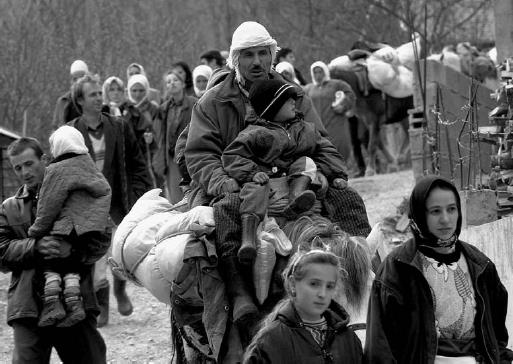War and ConflictWar in the Baltics |
What caused the Bosnian War? |
To understand the war in Bosnia (1992–95) it is important to review the history of Yugoslavia. Treaties at the end of World War I (1914–18) dissolved the Austria-Hungarian Empire, creating separate nations of Austria and Hungary and dividing their former territory into three new countries: Czechoslovakia, Poland, and the Kingdom of Serbs, Croats, and Slovenes.
The various factions within the Kingdom of Serbs, Croats, and Slovenes struggled for power. In 1929 King Alexander I (1888–1934), an ethnic Serbian, dismissed the national parliament, did away with the constitution (1921), and declared an absolute monarchy. He also changed the country’s name to Yugoslavia. The government was then dominated by ethnic Serbs, who had settled in the region as early as the seventh century A.D. and were converted to Eastern Christianity (Orthodox Christianity) by the ninth century. But the Serbian authority was challenged by the nation’s ethnic Croats, whose ancestors had settled in the region by the seventh century A.D. and were converted to Western Christianity (Roman Catholicism) by the Franks. To try to end the struggle, in 1939 Croats were given limited autonomy within Yugoslavia. The arrangement was short-lived: Yugoslavia was invaded by the Axis powers in April 1941 in World War II (1939–45).
The war over, in 1946 Yugoslavia was divided into six federated republics: Bosnia and Herzegovina, Croatia, Macedonia, Montenegro, Serbia, and Slovenia. But the lines of demarcation between these republics paid little regard to the ethnic boundaries of Serbs, Croats, and Muslims (who have been in the region since 1526, when it was invaded by Turks). Federal power was in the hands of Communist leader Josip Broz Tito (1892–1980). At first Tito tied his government to the Soviet Union; he directed the nationalization of land, industry, utilities, and natural resources. But after 1948 he pursued a policy of nonalignment.
In the 1980s Yugoslavia’s economy weakened, exacerbating regional differences. Tensions among ethnic groups flared. In 1991, as communism fell across Eastern Europe, Yugoslavia began to break apart. By March 1992 four of its republics had declared independence: Croatia, Slovenia, Macedonia, and Bosnia and Herzegovina. What remained of Yugoslavia were Serbia and Montenegro.
Serbs living in Bosnia and Herzegovina objected to the declaration of independence, which had been approved by the republic’s Croats and Muslims. Fighting broke out in Bosnia, centered around the capital city of Sarajevo. Troops from Serbia entered the region to back the ethnic uprising in Bosnia. As with many civil wars, the conflict divided families and friends. Evidence mounted that the Serbs, under the direction of leader Radovan Karadzic (1945-), were engaged in a program of ethnic cleansing, including the mass murder of tens of thousands of Muslim refugees. In May 1995, after the Serbian military in Bosnia refused to comply with a United Nations (UN) ultimatum, the North Atlantic Treaty Organization (NATO) began a campaign of strategic air strikes on Serbian targets. The NATO assaults weakened the Serbs and brought them to the negotiating table in November 1995, when U.S. mediators helped broker a peace agreement in Dayton, Ohio. A single state (Bosnia and Herzegovina) was re-established; it was to be governed through a power-sharing arrangement among Serbs, Croats, and Muslims. But the conflict in Yugoslavia was not over; by 1998 the region’s ethnic disputes erupted into another civil war, this time in the Kosovo province.
In 2003 Yugoslavia was effectively dissolved with the establishment of the country of Serbia and Montenegro through a peace accord brokered by officials from the European Union (EU). The new arrangement gave greater autonomy to each republic.

